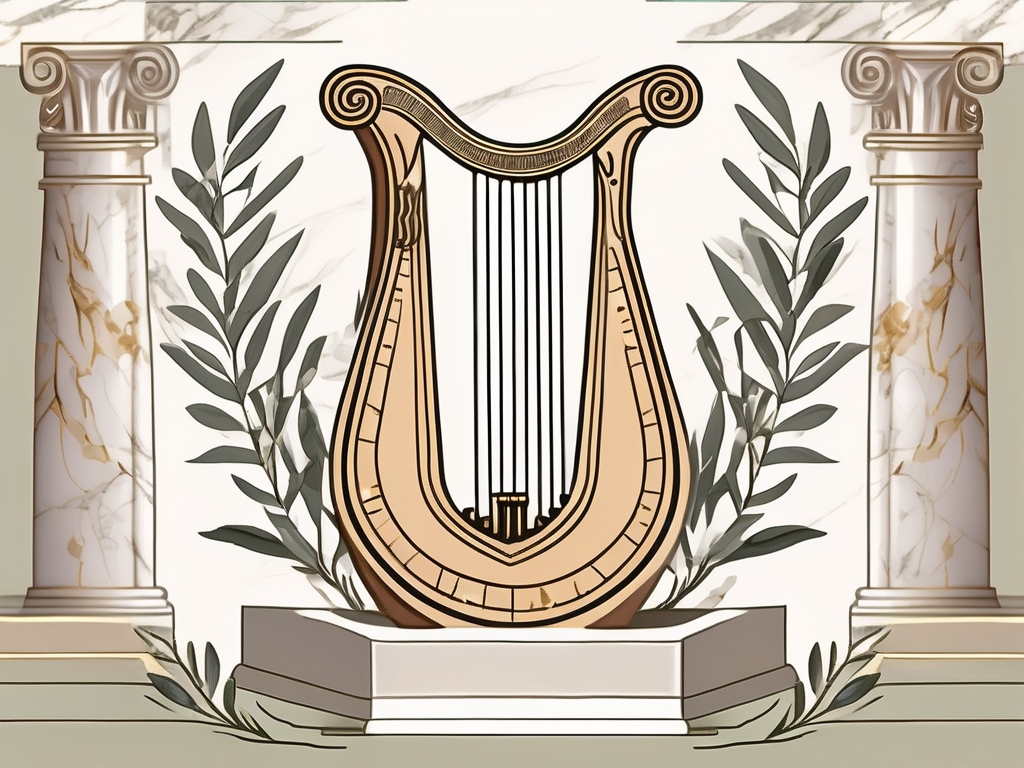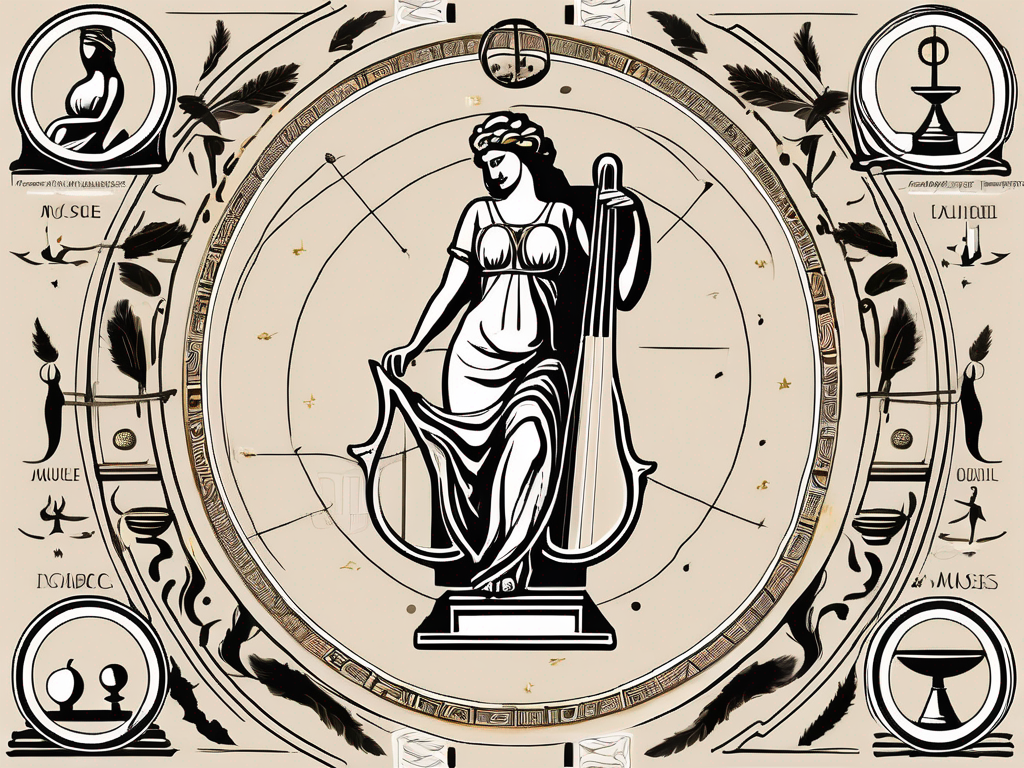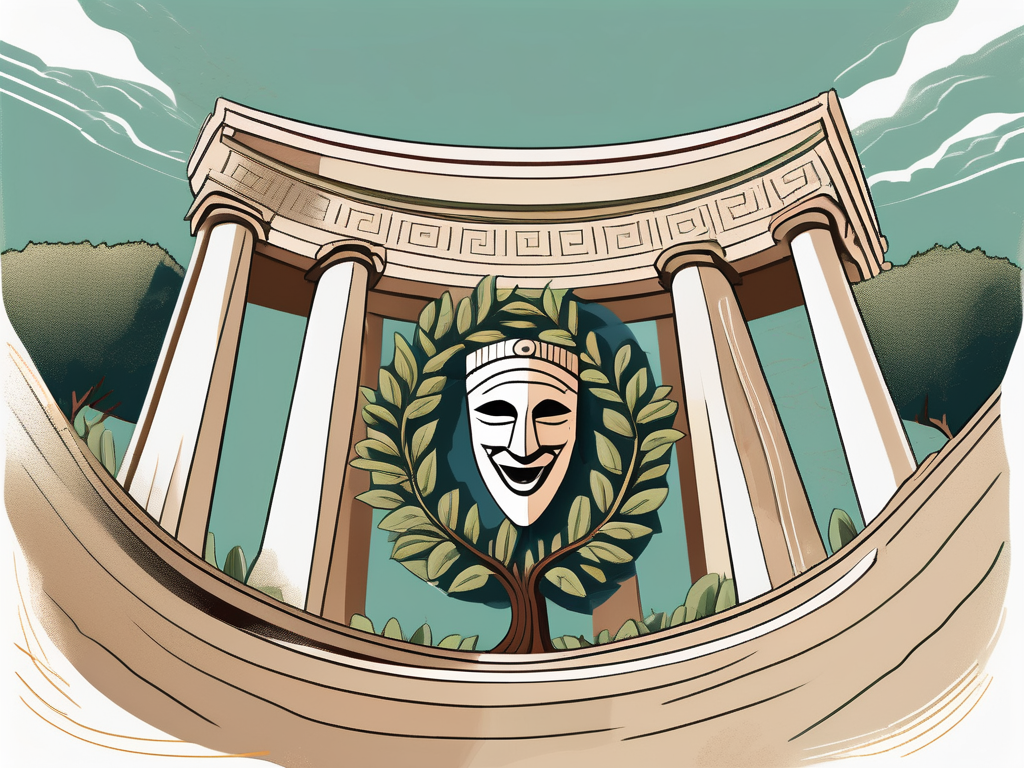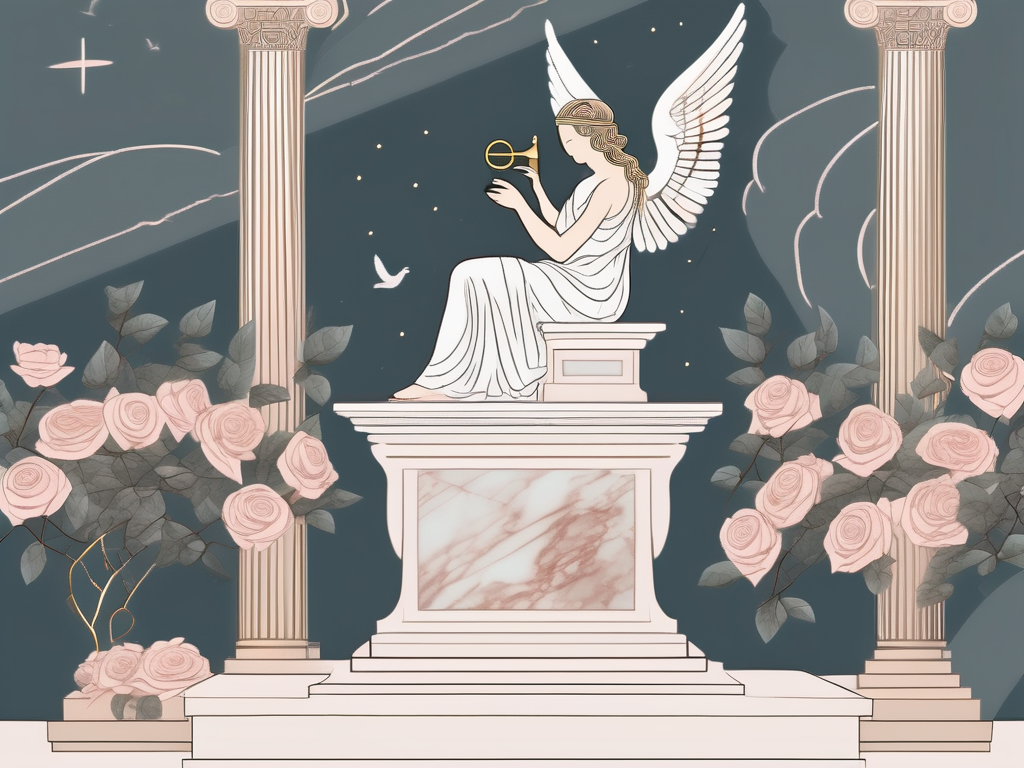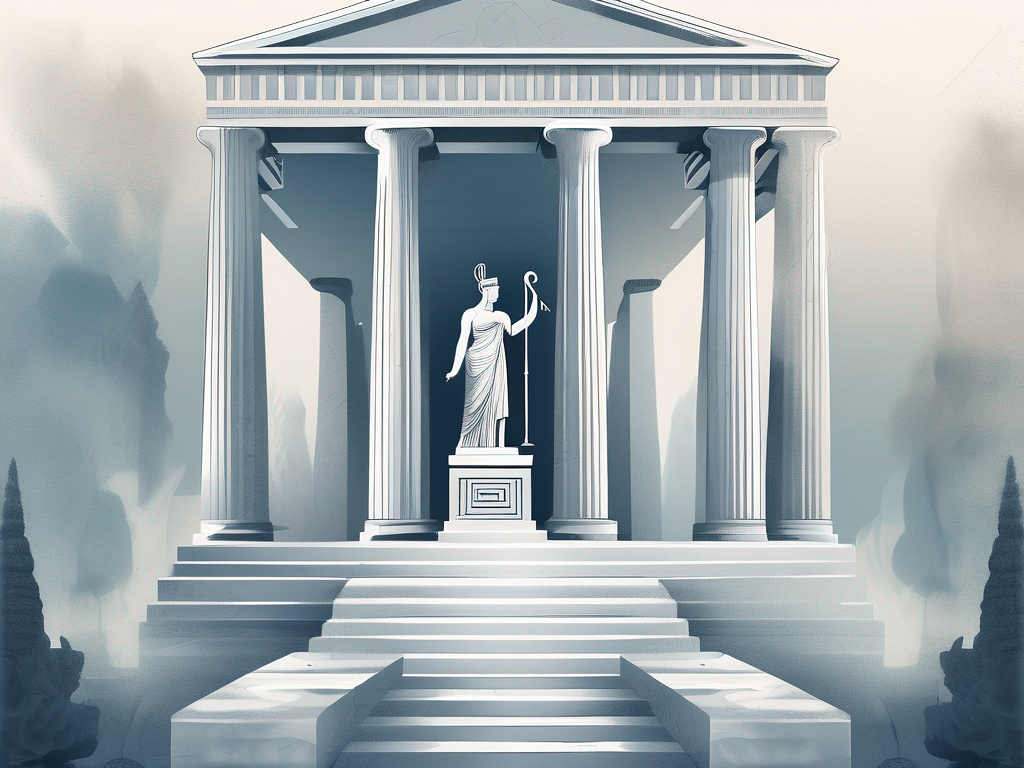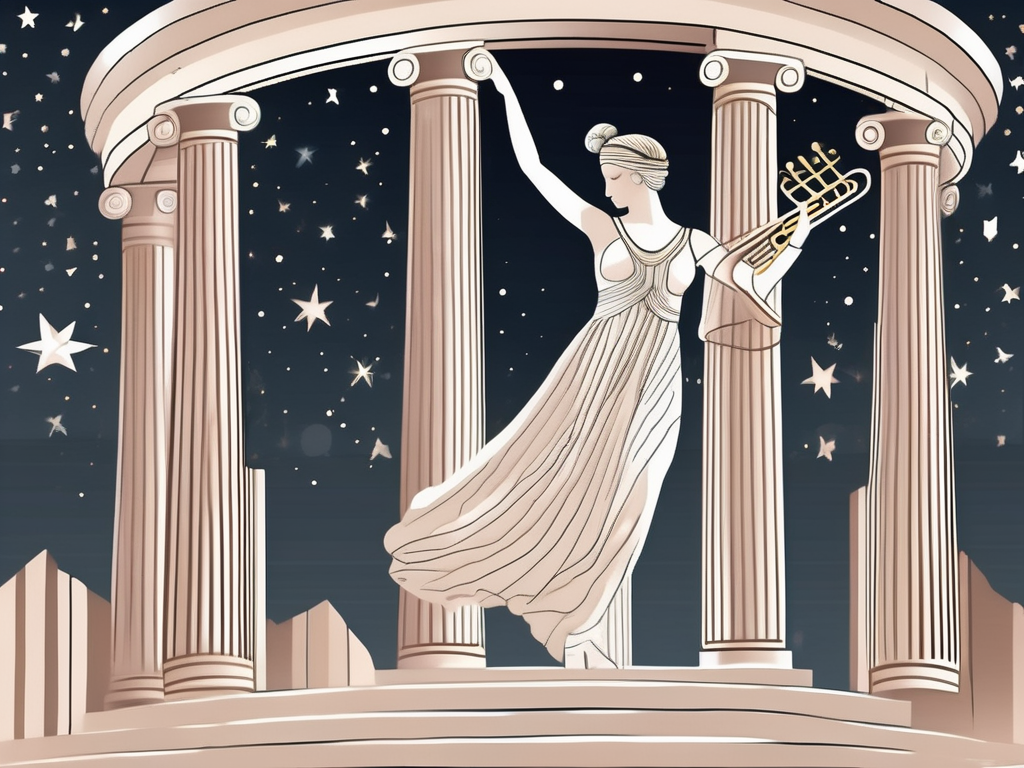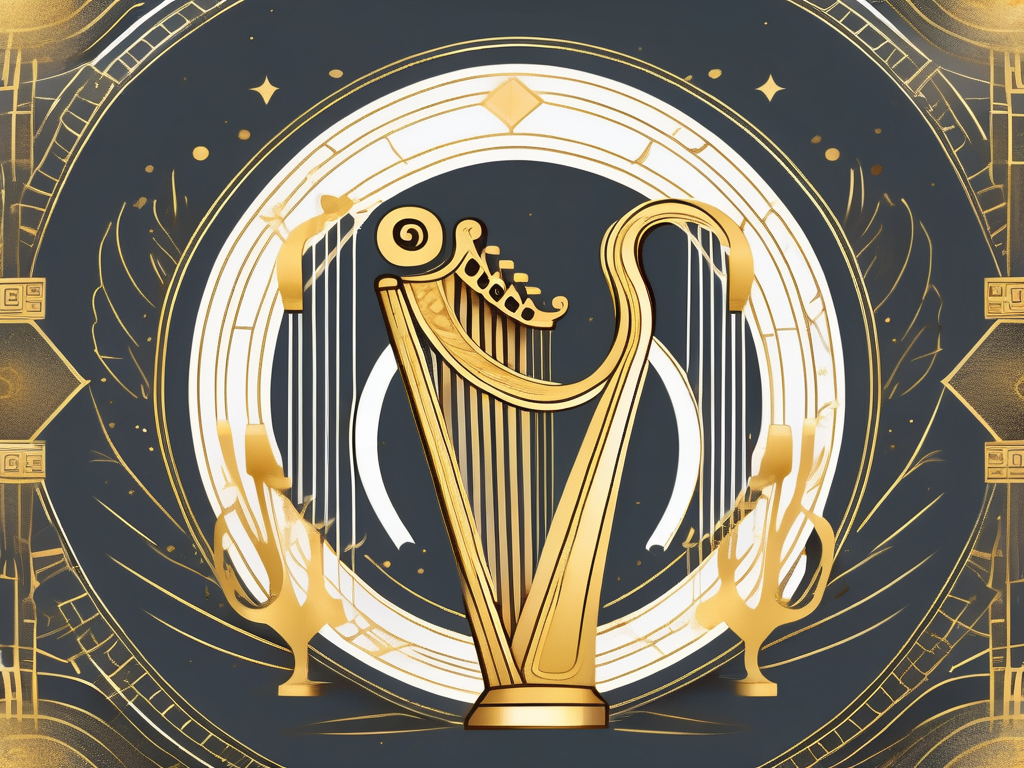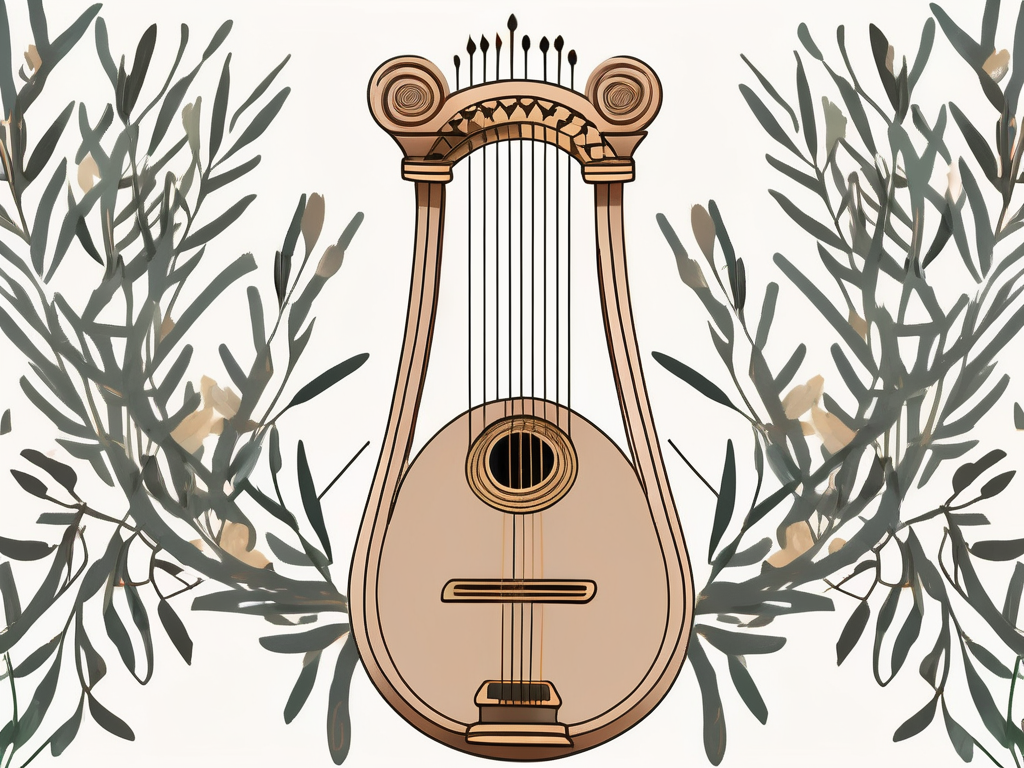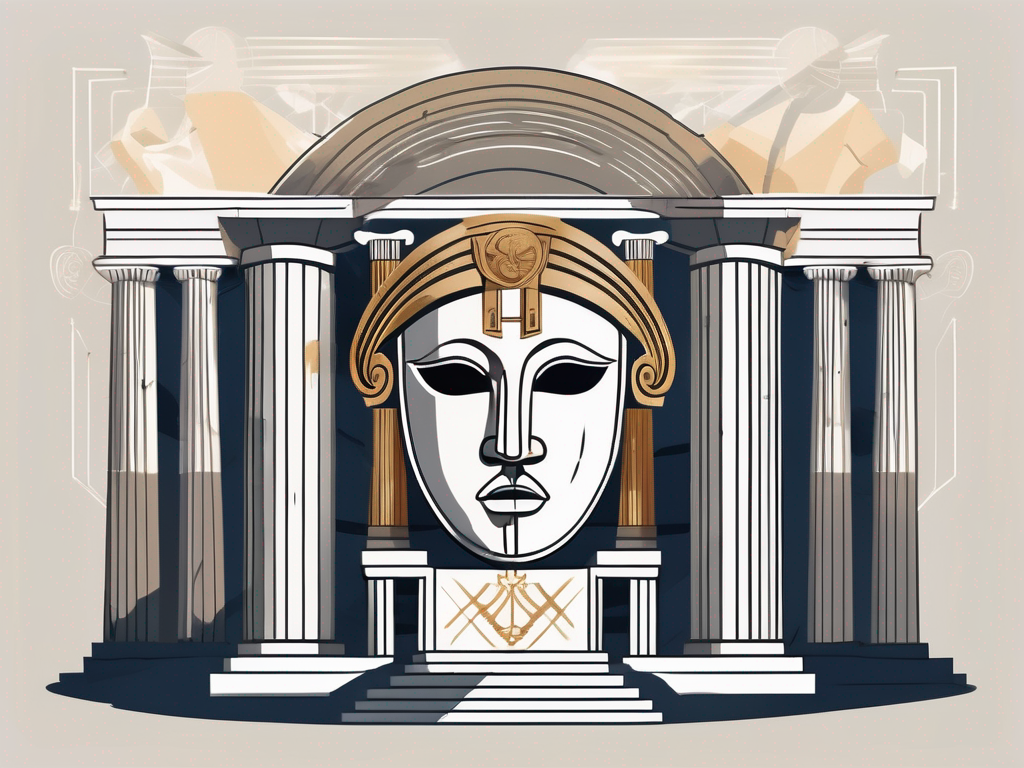In Greek mythology, there are countless gods and goddesses, each with their own unique powers and responsibilities. One such goddess is Polyhymnia, who is revered as the goddess of sacred poetry and music. Let’s delve into the intriguing world of Polyhymnia and unravel the mysteries surrounding her divine existence.
Understanding Polyhymnia’s Role in Greek Mythology
As one of the nine Muses, Polyhymnia holds a special place in Greek mythology. These Muses were believed to be the inspirational goddesses of literature, science, and the arts. While each Muse had her own sphere of influence, Polyhymnia’s domain was specifically linked to sacred poetry and music.
Now, let’s explore the fascinating details about Polyhymnia’s divine parentage and her relationships with her siblings.
Polyhymnia’s Divine Parentage
Polyhymnia was the daughter of Zeus, the king of the gods, and Mnemosyne, the goddess of memory. This divine lineage endowed her with great wisdom and creative inspiration.
Zeus, known for his numerous love affairs, was captivated by Mnemosyne’s beauty and charm. Together, they conceived the nine Muses, with Polyhymnia being one of their divine offspring. Mnemosyne, as the goddess of memory, played a crucial role in shaping Polyhymnia’s character and abilities. It is said that Polyhymnia inherited her mother’s ability to recall and preserve sacred knowledge, which she channeled into her poetry and music.
Polyhymnia’s Siblings and Their Roles
Polyhymnia had eight siblings, each representing different artistic and intellectual endeavors. These Muses included Calliope, the Muse of epic poetry, who inspired bards and storytellers to weave tales of heroes and legends. Clio, the Muse of history, guided historians in recording and preserving the events of the past.
Euterpe, the Muse of lyric poetry, filled the hearts of poets and musicians with inspiration, enabling them to create beautiful verses and melodies. Erato, the Muse of love poetry, stirred the hearts of lovers with her enchanting words, igniting passion and desire.
Melpomene, the Muse of tragedy, guided playwrights and actors in the creation and performance of tragic plays, evoking deep emotions and catharsis in audiences. Terpsichore, the Muse of dance, inspired dancers and choreographers to create graceful movements and captivating performances.
Thalia, the Muse of comedy, brought laughter and joy to the world, inspiring playwrights and comedians to create humorous and entertaining works. Urania, the Muse of astronomy, guided astronomers and scientists in their study of the stars and the cosmos, revealing the wonders of the universe.
Together, these nine Muses formed a formidable force of artistic inspiration in ancient Greece. They were revered and sought after by poets, musicians, artists, and scholars who believed that their divine influence was essential for creating works of great beauty and significance.
The Symbolism of Polyhymnia
Polyhymnia, in her representations, was often depicted with various symbolic elements. Two of the most prominent symbols associated with her are the veil and the lyre.
Polyhymnia and the Veil: A Symbol of Silence
The veil was a symbolic representation of Polyhymnia’s connection to silence and contemplation. It suggested that she encouraged individuals to reflect inwards and find inspiration within their own thoughts and emotions before expressing themselves through poetry or music.
In ancient times, silence was considered a sacred practice that allowed individuals to connect with their inner selves and the divine. Polyhymnia, as the muse of sacred poetry, embodied this concept of silence as a means to access deeper truths and insights.
When artists sought inspiration from Polyhymnia, they would first enter a state of silence and stillness, allowing their minds to quiet down and their thoughts to settle. It was believed that in this state, they would be able to tap into the wellspring of creativity that Polyhymnia represented.
The veil, therefore, served as a visual reminder of the importance of silence and introspection in the creative process. It was a symbol of the inner journey that artists had to undertake in order to access the depths of their imagination and bring forth their most inspired works.
The Lyre and the Grapes: Emblems of Music and Ecstasy
Another symbol closely associated with Polyhymnia is the lyre, a stringed musical instrument. The lyre represents the power of music and the ecstasy it brings. It symbolizes the harmonious blending of words and melodies that is central to both sacred poetry and music.
The lyre, with its delicate strings and resonant sound, was considered a divine instrument, capable of stirring the soul and evoking deep emotions. It was believed that when played, the lyre could transport listeners to a state of ecstasy, where they would experience a profound connection with the divine.
Furthermore, sometimes Polyhymnia is depicted holding grapes, which symbolize the divine inspiration often associated with the consumption of wine, leading to the creation of beautiful music and poetry.
In ancient Greece, wine was seen as a gift from the gods, and its consumption was often accompanied by music and poetry. It was believed that wine had the power to unlock the creative potential within individuals, allowing them to tap into the divine source of inspiration.
By holding grapes, Polyhymnia not only symbolizes the intoxicating effect of wine but also represents the transformative power of divine inspiration. Just as the consumption of wine could elevate the spirit and unleash a flood of creativity, so too could the influence of Polyhymnia inspire artists to create works of great beauty and significance.
In conclusion, the symbolism associated with Polyhymnia goes beyond the veil and the lyre. It encompasses the concepts of silence, introspection, music, and divine inspiration. Through these symbols, Polyhymnia invites individuals to embark on a journey of self-discovery and creative expression, encouraging them to find their own unique voice and bring forth works that resonate with the deepest parts of their being.
Polyhymnia’s Influence on Sacred Poetry
Polyhymnia’s influence on sacred poetry was profound, as it was believed that she inspired poets with divine creativity and guidance. Her role in the realm of sacred poetry is fascinating to explore.
The Divine Inspiration of Sacred Poets
Sacred poets from ancient Greece sought Polyhymnia’s favor, believing that her divine inspiration would guide their words and give their poetry a spiritual resonance. It was said that she whispered in their ears, filling their minds and hearts with profound thoughts and feelings that they could later express in their sacred verses.
Imagine a poet, sitting in a quiet corner of a temple, seeking the presence of Polyhymnia. The air is thick with incense, and the flickering candlelight casts dancing shadows on the walls. As the poet closes their eyes, they feel a gentle breeze brush against their face, as if Polyhymnia herself has arrived. In that moment, the poet’s mind becomes a vessel, ready to receive the divine inspiration that will flow through them.
Visions of ancient gods and goddesses fill the poet’s thoughts, their voices echoing in their mind like distant whispers. Polyhymnia’s presence is palpable, as if she is standing beside the poet, guiding their hand and shaping their words. The poet’s pen glides effortlessly across the parchment, as if driven by an unseen force.
Polyhymnia’s Themes in Ancient Greek Poetry
Ancient Greek poetry often explored themes related to gods, heroes, and religious rituals. Polyhymnia’s influence can be found in numerous poems from that era, which touched upon the divine, the mystical, and the profound.
One such poem, attributed to the poet Pindar, captures the essence of Polyhymnia’s influence. In this poem, Pindar weaves a tale of a hero’s journey, guided by the divine inspiration bestowed upon him by Polyhymnia. The verses are filled with vivid imagery, transporting the reader to a world where mortals and gods intertwine.
As the reader delves deeper into the poem, they can almost hear the melodic rhythm of Polyhymnia’s voice, guiding the poet’s words. The poem becomes a symphony of emotions, evoking a sense of awe and reverence for the divine. It is through Polyhymnia’s influence that the poet is able to capture the essence of the sacred and convey it to the reader.
Now let’s shift our focus to Polyhymnia’s role in the realm of music and hymns, where her influence was equally significant.
Polyhymnia’s Role in Music and Hymns
Polyhymnia’s connection to music and hymns was undeniable. Her influence on ancient Greek music is fascinating to explore, as it sheds light on the crucial role she played in the cultural fabric of that time.
The Sacred Melodies: Polyhymnia’s Musical Influence
Ancient Greek music had different genres, some of which were widely believed to be the direct result of Polyhymnia’s inspiration. These sacred melodies, with their enchanting notes, were composed to honor the gods and express devotion.
Polyhymnia’s Contribution to Ancient Greek Hymns
Hymns played a significant role in ancient Greek religious ceremonies, and Polyhymnia was believed to inspire the creation of these sacred songs. Her presence permeated the lyrical verses and melodies, adding depth and spiritual beauty to the hymns.
Lastly, let’s delve into how Polyhymnia was represented in art and sculpture, both in ancient times and in the modern era.
Polyhymnia in Art and Sculpture
Polyhymnia’s ethereal beauty and artistic significance made her a popular subject for artists and sculptors throughout history. Let’s explore how she was depicted in ancient Greek art and how she continues to be portrayed in modern artistic creations.
Depictions of Polyhymnia in Ancient Greek Art
Ancient Greek artists often depicted Polyhymnia as a noble and serene figure, adorned with the symbols associated with her domain. Whether in sculptures or paintings, she exuded an aura of wisdom, grace, and divine inspiration.
Polyhymnia’s Representation in Modern Art
In modern times, artists and creators still draw inspiration from Polyhymnia. Her depiction may vary, but her essence as the muse of sacred poetry and music remains a powerful inspiration for those in the artistic community.
In conclusion, Polyhymnia, the Greek goddess of sacred poetry and music, holds an influential role in Greek mythology. From her divine parentage to her symbolism, from her influence on sacred poetry to her contributions to music and hymns, she continues to captivate and inspire through her legacy. Whether in ancient art or modern interpretations, Polyhymnia’s presence and impact endure, reminding us of the transcendent power of poetry and music.
